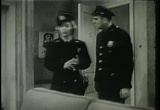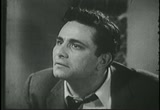Over the years, many religious dramas have appeared on the radio from the 19e0s right through the present. It’s probably fair to say that the bulk of long-lasting radio dramas produced since the end of the Golden Age of radio have either been underwritten by Foundation grants or religious organizations. Still, there were plenty of programs with religious themes or put on by religious organizations during the Golden Age, and often with the same type of talent appeared on the religious programs.
Of course, during the Golden Age of Radio, many shows that would hardly be considered religious would often pause around Christmas and refer back to Bethlehem. We won’t really discuss that here. Our focus is on those shows that were religiously produced or focused on religion. And of course, we’re not considered with non-dramatic religious programming such as Aimee McPherson’s sermons. In this first part, we’ll focus on the major golden age religious programs:
The Ava Maria Hour (1939-50s):
The Ava Maria Hour was perhaps the first religious drama to hit the air. It was a Catholic program, sponsored by the Greymoor Friars in Garrison, New York. Early episodes appear to have focused on telling the stories of the lives of the Saints.
The program’s most ambitious undertaking was in 1951 when it produced an exhaustive mini-series on the Life of Christ that ran for a stunning 43 episodes. The stories were for the most part well done and well-researched, though in a serial that long, they’ll always be a few parts that don’t work.
Recently, the Franciscan Friars of the Atonement have begun to rebroadcast old episodes of the Ava Maria Hour on Blog Talk Radio hosted by Father Bob Warren.
Light of the World (1940s):
This program originated over NBC and had the unique premise of serializing the Bible with fifteen minute daily installments. It was broadcast mostly during World War II and unfortunately the only known episodes in existence are from major news days when stations recorded full day broadcasts.
Eternal Light (1944-73)
The Eternal Light was a program born out of World War II which brought home to many Americans the dangers of anti-Semitism. Eternal Light was produced by the Jewish Theological Seminary and aired over NBC. It began over radio but eventually found its way to television.
The topics of the episodes varied. While there were a few episodes that were directly based on Bible stories, more often Jewish-authored books about biblical events would be used as a basis for a drama. In addition, the series focused extensively on the history of the Jewish people, their trials and persecutions, as well as the lives of accomplished Jews throughout history. In some ways, it was similar to the black radio production Destination: Freedom in its overall focus. It remained a mainstay throughout the golden age of radio, though in latter years it moved away from drama and more toward discussions.
While there’s no handy MP3 download site, OTRCat offers a 700 episode collection for sale as well a free radio sample you can listen to and download.
The Upper Room (1947)
This was somewhat of an odd series by Carleton E. Morse, the famous creator of One Man’s Family and I Love a Mystery. While Morse’ fictional Barbour family was a cauldron of marital strife and unrest, the hope of The Upper Room was to promote strong families and marital togetherness. Unfortunately, the episodes come off as far too preachy, as a religious version of the industrial film. Only six episodes remain in existence, four of which are available here.
The Family Theater (1947-57)
Where Morse failed, Father Patrick Peyton succeeded. Peyton also wanted to promote family togetherness and family prayer and approached the Mutual Broadcasting System about doing a series called the Family Theater. There was definitely interest in the series. In the post-war era, concerns about juvenile delinquency, and the overall decline of morals made Family Theater a dose of just what the doctor ordered.
Mutual was clear that the series had to be non-denominational in nature, so most of the episodes have appeal to a wide audience. The show had no sponsor and its only product was family prayer which was encouraged by two motto, “More things are wrought by prayer than this world dreamed of” and “The family that prays together stays together.”
What aired between these two scenes were some of the finest radio dramas of the era. The programs originally written for the show often pulled at the heartstrings as well as encouraging courage, sacrifice, honesty, mercy, and love of family. Later scripts dramatized parts of classic books including Don Quixote, 20,000 Leagues Under the Sea, and Robin Hood.
Family Theater was an anthology program with a different cast every week, as well as a host who would talk about the importance of strong families and family prayer. Guets included a who’s who of Hollywood: Jimmy Stewart, Bing Crosby, Bob Hope, Fred Allen, Jimmy Durante, Edward G. Robinson, William Gargan, Ronald Reagan, Edmond O’Brien, and many more. In addition, radio comedy power couples Fibber McGee and Molly and Ozzie and Harriet did special episodes of their programs for Family Theater.
Several sites sell DVD discs of the Family Theater, in addition otr.net has more than 300 episode available for online streaming.
Greatest Story Ever Told (1947-56):
The Greatest Story Ever Told focused on the life and time of Jesus. Unlike other programs mentioned, the show was sponsored throughout its run by the Goodyear Tire and Rubber company. However, Goodyear was sensitive to the fact that overt commercials would not sit well with many in the audience, and so they were mentioned at the beginning of the show with a few second tag but without long form commercials.
The program also didn’t include any cast information, so when it comes to voices involved, it could be anyone. The voice of Jesus was given an echo effect which was thought to be similar to giving a picture of Jesus a halo. The writers also decided to use no fictional dialogue for Jesus, but to only have Him make statements that were written in the Gospels.
There were several sorts of episodes: some told stories directly from the life of Christ, some dramatized parables, and others focused on how the hearers of Jesus may have applied his lessons to their own lives in the first century.
Both the parables and the incidents from the Bible were expanded, using imagination, research, and dramatic license to take what may be a few verses out of the Bible and make it into a 30 minute episode. The results were usually pretty good with the incidents, but the Parables were weaker as sometimes in the expanded story, the original point of the parable ended up lost.
The most interesting episodes follow a first century protagonist as they face a serious problem and find a solution in hearing a teaching of Christ. The applications were usually well-thought out, and rarely came off as preachy, and helped listeners to see well-worn passages in a new light.
The show was also enhanced by an orchestra and a choir, both of which were heard frequently.
76 episodes are available here.
Next week, we’ll turn our attention to the shows began in 1950s through the modern era. If you’re aware of a religious radio dramas from before the 1950s that we’ve not mentioned, please do so in the comments.
If you enjoyed this post, you can have new posts about Detective stories and the golden age of radio and television delivered automatically to your Kindle.


